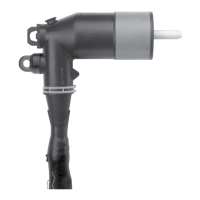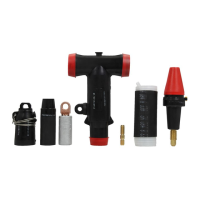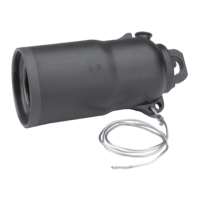When power is applied to the control, the self-test routine
will commence and the LCD display will activate, followed
by a PASS message. Check the date and time displayed and
reset if necessary. If a failure or diagnostic error message is
displayed, refer to Section 8: Troubleshooting.
Setting the control for multi-phase service
When programming a control for multi-phase operation,
there are a number of settings that configure the control
for operation and a number that configure the control
to function with the connected voltage regulators. It
is important to identify the pertinent settings for the
individual regulators and enter each setting into the control
appropriately. Refer to Section6: Control Features: Multi-
phase voltage regulation and document MZ225003EN
CL-7 Multi-phase Control Reference for guidance on
programming the control for multi-phase operation.
Operational check
Pre-installation check
The CL-7 control has the facilities for either manual or
automatic operation of the tap-changer, using either the
internal source of power (the regulator) or an external
source. To perform an operational check of the control
before installing the regulator, follow these steps.
ote:N For use with a non-Eaton's Cooper Power series
voltage regulator, refer to the manufacturer’s manual
for equipment specific information.
1. Open V1 (and V6, if present) knife switch(es) located
on back panel of control enclosure.
2. Place POWER switch in OFF position and CONTROL
FUNCTION switch in OFF position.
3. Connect a variable 120 Vac 50/60 Hz source to
EXTERNAL SOURCE terminals. Controls wired for an
external source of 220 –240 Vac have a decal specifying
“240” at the terminals. Verify proper polarity.
4. Place POWER switch in EXTERNAL position.
5. Move CONTROL FUNCTION switch to LOCAL
MANUAL, press and hold RAISE/LOWER momentary
toggle switch. Allow tap-changer to operate to 8 L, the
5% buck position. Verify tap position indication (TPI) is
registering properly by pressing Metering-PLUS Tap
Position key or viewing FC 12.
6. Raise and hold the RAISE/LOWER momentary toggle
switch. Allow tap-changer to operate to 8 R, the 5%
boost position.
7. Place CONTROL FUNCTION switch in the AUTO/
REMOTE position.
8. Increase the variable voltage source until applied
voltage is out-of-band. Note that the OUT-OF-BAND
HIGH LED on the front panel will come on. After the
time delay period, the control will issue a lower-tap-
change signal. Verify tap position indication (TPI) is
registering properly by pressing the Metering-PLUS
Tap Position key or viewing FC 12 and comparing the
reading to the tap position indicator on the regulator
junction box.
9. Decrease the variable voltage source until applied
voltage is out of band. Note that the OUT-OF-BAND
LOW LED on the front panel will come on. After the
time delay period, the control will issue a raise-tap-
change signal. Verify tap position indication (TPI) is
registering properly by pressing the Metering-PLUS
Tap Position key or viewing FC 12 and comparing the
reading to the tap position indicator on the regulator
junction box.
10. Place the CONTROL FUNCTION switch in the LOCAL
MANUAL position and manually return the tap-changer
to neutral. When on neutral, the NEUTRAL light will
illuminate continuously and position indicator will point
to zero.
11. Place CONTROL FUNCTION switch in OFF position.
12. Depress the DRAG HAND Reset momentary switch
and release; the position indicator drag hands will reset
to indicating hand.
13. Turn POWER switch to OFF and disconnect power
supply from EXTERNAL SOURCE terminals.
In-service check
With the control programmed for basic operation, perform
an operational check of manual and automatic operation.
1. Press the Metering-PLUS Comp Voltage key to
display compensated voltage and both band edges on
the LCD panel.
2. Place the CONTROL FUNCTION switch in LOCAL
MANUAL position.
3. Toggle the RAISE/LOWER switch up to activate a raise
operation. Allow tap-changer to operate for enough
steps to take voltage out of band. Note that the OUT-
OF-BAND HIGH LED on the front panel will come on.
4. Place the CONTROL FUNCTION switch in the AUTO/
REMOTE position. After the time delay period, the
control should cause the regulator to step down to the
top band edge. This will display on the LCD panel.
Example: 120 V and a 2 V bandwidth = 121 V top band
edge.
5. After voltage is brought in-band and tap changing has
stopped, move the CONTROL FUNCTION switch to the
LOCAL MANUAL position.
6. Toggle the RAISE/LOWER switch down to activate
a lower operation. Allow tap-changer to operate for
enough steps to take voltage out of band. Note that the
OUT-OF-BAND LOW LED on the front panel will come
on.
15
INSTALLATION, OPERATION, AND MAINTENANCE INSTRUCTIONS MN225003EN April 2018
CL-7 Voltage Regulator Control

